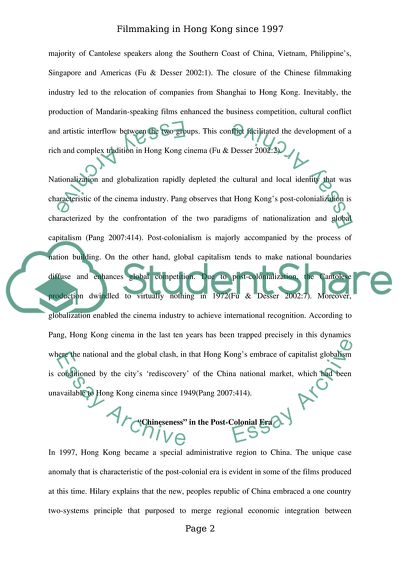Cite this document
(Hong Kong's Identity on the Global Stage Report Example | Topics and Well Written Essays - 2750 words, n.d.)
Hong Kong's Identity on the Global Stage Report Example | Topics and Well Written Essays - 2750 words. https://studentshare.org/visual-arts-film-studies/1874154-how-has-filmmaking-andor-literature-changed-in-hong-kong-since-that-citys-return-to-chinese-sovereignty-in-1997
Hong Kong's Identity on the Global Stage Report Example | Topics and Well Written Essays - 2750 words. https://studentshare.org/visual-arts-film-studies/1874154-how-has-filmmaking-andor-literature-changed-in-hong-kong-since-that-citys-return-to-chinese-sovereignty-in-1997
(Hong Kong'S Identity on the Global Stage Report Example | Topics and Well Written Essays - 2750 Words)
Hong Kong'S Identity on the Global Stage Report Example | Topics and Well Written Essays - 2750 Words. https://studentshare.org/visual-arts-film-studies/1874154-how-has-filmmaking-andor-literature-changed-in-hong-kong-since-that-citys-return-to-chinese-sovereignty-in-1997.
Hong Kong'S Identity on the Global Stage Report Example | Topics and Well Written Essays - 2750 Words. https://studentshare.org/visual-arts-film-studies/1874154-how-has-filmmaking-andor-literature-changed-in-hong-kong-since-that-citys-return-to-chinese-sovereignty-in-1997.
“Hong Kong'S Identity on the Global Stage Report Example | Topics and Well Written Essays - 2750 Words”. https://studentshare.org/visual-arts-film-studies/1874154-how-has-filmmaking-andor-literature-changed-in-hong-kong-since-that-citys-return-to-chinese-sovereignty-in-1997.


